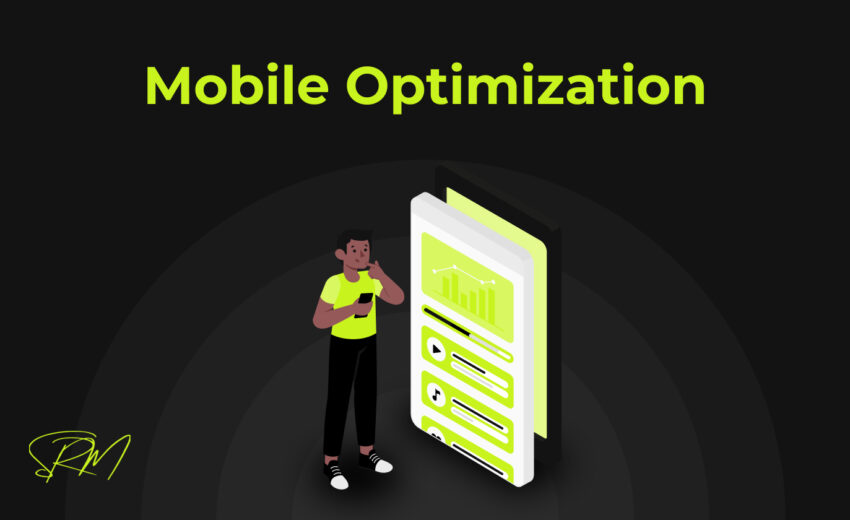
Mobile optimization is very important today since most people use smartphones to browse the internet. A mobile-friendly site makes it easy for users to navigate, loads quickly, and keeps visitors engaged, which helps increase conversions. Without it, businesses might lose potential customers who expect fast and easy access.
Making Landing Pages user-friendly for mobile means having a clean design, simple navigation, and responsive layouts that fit all screen sizes. Quick loading, readable fonts, and clear calls-to-action improve the experience and help your site rank higher on search engines.
Why Mobile Optimization Matters
Mobile optimization is really important these days because it affects how users experience your website. Since more people are using mobile phones to browse, making sure your site works well on mobile is key to keeping them happy and coming back. If your website isn’t mobile-friendly, it can lead to more people leaving quickly, which means fewer sales and conversions. Incorporating digital marketing solutions can help you create a seamless mobile experience that keeps users engaged and drives better results.
Here are three points to keep in mind:
- Faster Load Times: Mobile-friendly sites load faster, giving users a smooth experience. If your site is slow, people will get frustrated and leave. To speed things up, try reducing the size of images and using tools that help your site load faster.
- Better Navigation: Mobile-optimized sites make it easier for people to find what they need. With buttons and text that fit well on small screens, users can quickly browse your site without trouble, which leads to more people staying and taking action.
- Improved SEO: Google loves websites that are mobile-friendly. A well-optimized mobile site can help improve your rankings on search engines, which means more people will find your site when they search online.
Key Elements of Mobile-Friendly Landing Pages
Having mobile-friendly landing pages is super important to make sure users have a good experience when visiting your site on their phones. To make this happen, focus on things like responsive design, fast loading speed, and easy navigation. These help keep people on your page, improve conversions, and make the site work well on mobile.
Here are three key things to focus on:
- Responsive Design: A responsive design makes sure your landing page looks good on any screen size, whether it’s a phone or tablet.
Tip: Use flexible layouts and design techniques that make your content adjust properly on different screens, so users don’t need to zoom or scroll sideways. - Fast Loading Speed: People don’t like waiting for pages to load. If your page is slow, they may leave before even looking at it.
Tip: Make images smaller and reduce extra code to speed up your page and make sure it loads quickly for mobile users. - Easy Navigation: Your mobile landing page should be easy to use, with a simple way to find what they need.
Tip: Make buttons big enough to tap easily and have a simple menu so people can quickly find what they’re looking for without any hassle.
Best Practices for Mobile Optimization
Mobile optimization is essential for creating a seamless experience for users accessing your website from their phones. By following best practices such as simplifying page layouts, optimizing images and media, and using mobile-friendly fonts, you can ensure that your site is both functional and user-friendly. Incorporating technical SEO services can further enhance your mobile optimization efforts by addressing critical backend improvements and ensuring optimal performance. This is especially important for Landing Pages, as a poor mobile experience can drive visitors away quickly.
Here are three best practices for mobile optimization:
- Simplifying Page Layout: Keep your page layout clean and organized, removing unnecessary elements that can clutter the screen.
- Optimizing Images and Media: Large images and videos can slow down your page, so it’s important to optimize them for mobile use.
- Using Mobile-Friendly Fonts: The text on your mobile site needs to be easy to read without zooming in. Choose simple, sans-serif fonts, and ensure the font size is large enough for mobile users to read comfortably without straining their eyes.
Testing and Improving Mobile Performance
Testing and improving mobile performance is really important to make sure your website works well on mobile devices. By testing how your site performs on phones, you can spot problems and fix them, creating a better experience for your visitors. Tools like Google Mobile-Friendly Test and PageSpeed Insights can help you check things like load times, responsiveness, and overall mobile performance. These tools make it easy to find any issues and fix them.
Common problems people face on mobile are slow loading pages, hard-to-use navigation, or content that doesn’t display properly. To fix these, try compressing images, simplifying your page design, and making sure everything is optimized for mobile. Also, make sure there are no broken links or non-responsive elements. By regularly testing and fixing these issues, you can create a smoother experience and keep visitors engaged on your mobile-friendly site.
Final Thoughts
To sum it up, mobile optimization is a must if you want to give your users a great experience and stay ahead in the digital world. By making your website mobile-friendly, you can speed up load times, make navigation easier, and ensure your content looks good on any device. This results in more engagement, better conversions, and improved SEO rankings. For businesses, the next step is to focus on optimizing Landing Pages and other important pages for mobile. Regular testing, fixing issues, and following best practices with the help of a technical SEO expert will help your mobile optimization efforts succeed and grow your business.
Ready to enhance your website’s mobile experience? Contact a technical SEO expert today and start transforming your landing pages into high-converting, mobile-friendly powerhouses!
Check out our latest blog on “Demographics in GA4”
Frequently Asked Questions (FAQ’s)
What are the key elements of effective landing pages?
Effective landing pages include a clear headline, a strong call-to-action (CTA), easy navigation, and content that engages visitors. Fast loading times, mobile optimization, and features like testimonials or security badges also help build trust and improve conversions.
How do I optimize my landing pages for mobile devices?
To optimize your landing pages for mobile, make sure the design adjusts to different screen sizes. Keep the content simple and easy to read, use fonts that are legible, and make sure images load quickly. Also, ensure buttons and calls-to-action are easy to tap, and navigation is straightforward for a smooth mobile experience.
What is a mobile landing page?
A mobile landing page is a page built for mobile devices with one main goal, often a call-to-action (CTA). People usually visit this page after clicking on an ad, a search result, or a link from an email or social media. It’s designed to be simple, easy to navigate, and encourage users to take action quickly.
What is landing page optimization?
Landing page optimization is about improving the page’s design and layout to make it easier for users to navigate, which helps increase conversions. The aim is to enhance the user experience (UX) and encourage visitors to take actions, like making a purchase or signing up, ultimately turning them into loyal customers.
What is the optimal landing page?
A successful landing page should focus on one key message, one value, and one main call-to-action (CTA). While it’s okay to have more than one CTA, the design should highlight one key action that you want users to take. The most effective CTAs stand out clearly, guiding visitors toward completing the goal without confusion or distraction. Keep it simple and focused to make sure users know exactly what to do next.





